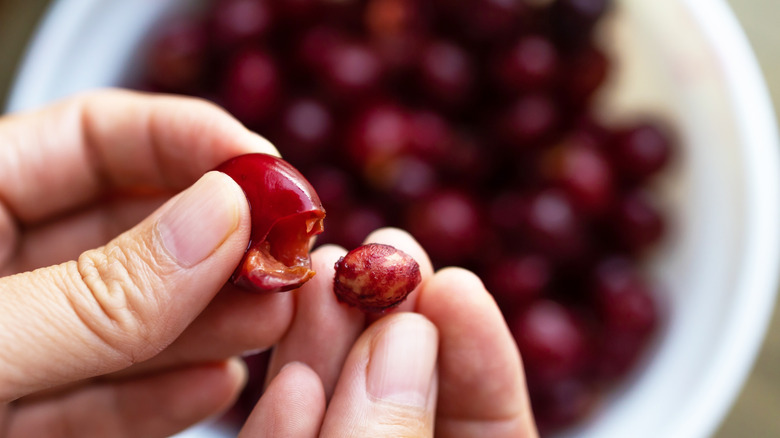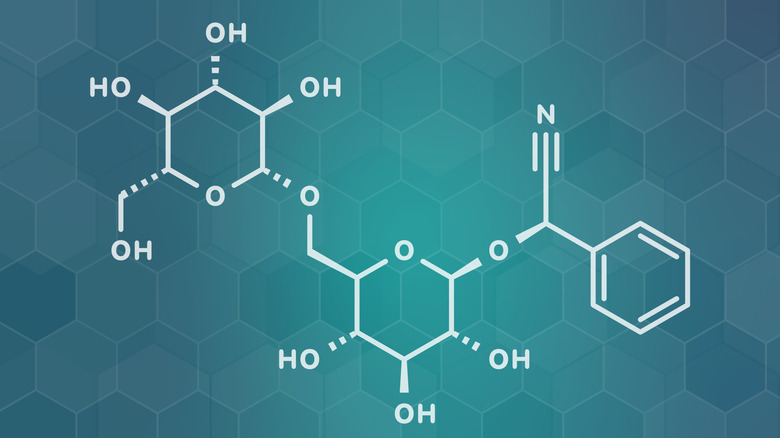Why You Shouldn't Swallow Cherry Pits
Common folklore warns against a range of potential food health hazards. Some of these warnings are closer to fantastical fun for children, such as spitting out watermelon seeds so they don't sprout in your tummy. One downside to these silly stories is that it can make it difficult to know when something is actually harmful. The humble cherry pit, for example, poses real health risks if ingested in sufficient quantities.
The biggest scare factor of cherry pits is the fact that they contain amygdalin, a compound that breaks down into cyanide when it interacts with the enzymes in your saliva. That said, accidentally swallowing a single cherry pit usually isn't cause for panic. Amygdalin is mostly trapped deep within the hard shell preventing all but trace amounts of the compound from escaping. In other words, as long as you don't chew your cherry pits, your body will probably pass them without incident.
In fact, hard seeds evolved to be insoluble as a means to distribute further away from the mother plant via the droppings of hungry animals (usually without killing them!). While this offers some solace against the fear of cyanide poisoning, it doesn't give you carte blanche to swallow cherry pits willy-nilly. Their insoluble nature means that swallowing multiple pits poses a serious risk of causing intestinal blockages. Moreover, their shape and size form a choking hazard, especially for young children.
How much cyanide do cherry pits have?
Cherries don't contain cyanide per se, but the amygdalin in their pits is a cyanide precursor. The amount of amygdalin present depends on the type of cherry. According to a 2014 study conducted by the University of Leeds, red cherry pits contain 3.9 mg/g of amygdalin, black pits contain 2.7 mg/g, while morello cherry seeds pose an extreme outlier at 65 mg/g. That said, the amount of cyanide you actually metabolize from a cherry pit isn't a linear calculation and is subject to a variety of factors.
Estimates put the lethal threshold for ingested amygdalin between 9 and 60 mg per kg of body weight for the average adult. Given that most cherry pits weigh around 1 gram, a 150-lb person would need to ingest at minimum 612 mg of amygdalin to get a lethal dose of cyanide. That's 157 red, 227 black, and 9 morello cherry pits you'd need to eat, respectively.
Keep in mind that cherries aren't the only potentially toxic fruits. The seeds inside apricots, peaches, apples, plums, and almonds all contain significant amounts of amygdalin.

